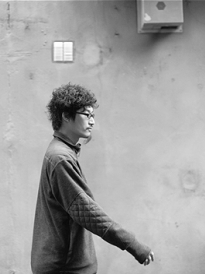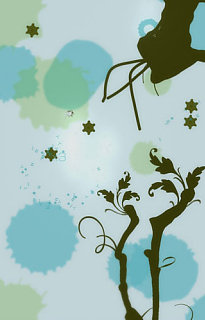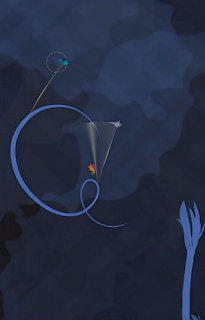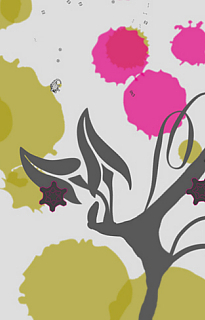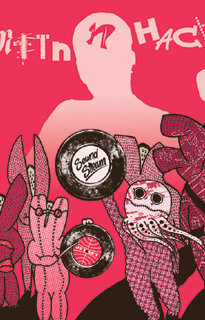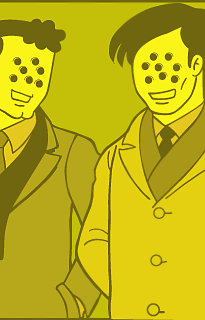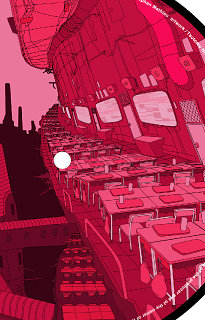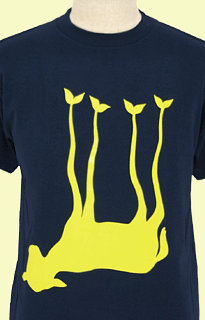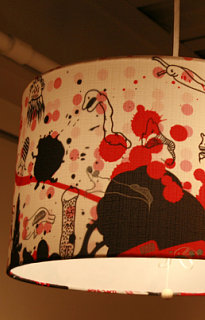Baiyon
The creation of Eden - Part 1
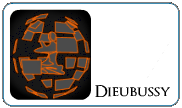
COREgaming
- 19 / 11 / 08
PIXEL JUNK EDEN is the third title of a series initiated by Q-Games studio, inaugurated in Kyoto by Dylan Cuthbert and Kenkichi Shimooka. In the spirit of free creation that has been defining this singular series of games, Cuthbert worked together with Baiyon, an independent local artist, in the attempt to create a game that would express his great audiovisual mastery, as well as a whole new and innovative game play, capable of unifying all the sensorial components in a single, mesmerizing experience.
The work of Baiyon is notable from the first moment: the use of dynamic vector graphics presents a legitimate alternative to the generalized use of three dimensional volumes while providing simpler forms and colors that easily establish a connection with the player. His function in the game, however, also includes the creation of all audible constituents, from the subtle sound effects to the techno rythms that create a unique background for the game, rendering it even more memorable.
In order to best understand the design decisions behind the creation of EDEN, I searched for ways to establish a contact with the independent Japanese artist for the first of two articles dedicated to the making of the game. Happy to be a part of the videogame medium for the first time, Baiyon proved to be extremely kind when I asked him to answer some questions about his artistic career, influences and the moment of his life when he met Dylan Cuthbert and joined Q-Games for the creation of this fascinating project.
-------------------------------------------------------------
COREGAMERS : Your work as an artist spans through various forms of expression, from visual, material and musical. Also, you seem very active in urban events. What captivated you to enter this world experimental art and technology?
BAIYON : Ever since I was a little kid I loved to draw things. I grew up, went to an art university and majored in western art. After graduation I bought a computer in order to follow my interests in computer technology and music composition.
At university pretty much all I did was create and listen to music. I took a brief break from the visual side of things but I was attracted back to visual arts by an urge to create graphic images. This new direction held none of my previously-felt frustrations and I found it intensely enjoyable and rewarding to create in this way.
I improved over time and also learned how to create sounds and music. The rate at which I turned out work increased and I never looked back. To this day, if I think it's interesting, I'll try and put something out there.
CG : Judging from your work displayed in your website, your style is familiar and fresh at the same time. What are the biggest influences and motivations for your work?
BAIYON : There are a lot of works out there that I adore. Of course, these are works that influence me as an artist. I am also influenced by my past self and the experiences that have brought me here today. I often use my past and my personal experiences as motifs in my work.
CG : PIXEL JUNK EDEN is your first participation in a videogame. Please tell me how did Dylan Cuthbert and his Q-Games studio approach you and how did you feel about the new perspective of working in a videogame?
BAIYON : I've always wanted to be involved in making a game. The two pillars of the game - graphics and music - I've worked in those media all my life and I'm excited because where these two media intersect - in a game - is where I can express my self totally.
I met Dylan from Q-Games at a party in Kyoto. I told him I'd been wanting to make games forever and luckily he was aware of my work and he mentioned he might have a project that fitted well with what I was doing, so we arranged to have a more formal meeting. That was the PixelJunk project and since then I've been working on how I can transform my graphics and sounds into a game. How can my graphics be reporduced in-game and how would this affect gameplay? We - the director of the game and the staff that worked on it - made a lot of mistakes during this process, but we all learned a lot.
I've always wanted to work with game development, so I'm very happy we were able to make this happen.
CG : What was the nature of your involvement in this project? Did you have to create all-new artwork and music for the game or did you use any of your previous ideas?
BAIYON : I was the Art Director and the Sound Director for this title. I was responsible for the graphics, sound and sound effects. Pretty much all of the tracks used in the game are new. However, these tracks are essentially an extension of my regular music. The only track that you might have heard before here is the ending track, '3 across 4'. That track also uses a field recording sample from Kyoto (a klaxon).
As you know, I'm based in Kyoto as is Q-Games so it was important for us to have a Kyoto motif in there somewhere. I'm glad that this Kyoto-esque track was used for the ending.
CG : I find vector graphics to be fascinating. A visual composition such as the one seen in EDEN a great solution for making impressive, smooth high definition visuals without the expenses associated to working with high-end computers in complex 3D graphic engines. As an artist, what do you think is the power of vector graphics – what makes them unique?
BAIYON : I love to work with Bézier Curves. I am all over vector graphics due to my work in 2D and with magazines, CD and record cover artwork as well as my apparel designs. We have a choice in games - whether to work in 2D or 3D and of course 3D has its own special qualities. However I believe that with eden, given the power and specs of the PS3, combining these beautiful and mysterious plant designs with vector graphics leads to limitless possibilities. At the same time I do feel the love for 3D...
CG : What are you greatest inspirations? Were you inspired by any previous videogame experience you had for the creation of the audiovisual components of EDEN, or did you look deep into your own art expression?
BAIYON : As an artist I get my inspiration from a wide variety of sources - I am influenced by a number of different creations in a number of different ways. It's difficult to put into words, but before I got into making games I was heavily influenced in my work by the graphics and music that I would encounter as a gamer myself. My all-time fave game is MOTHER (EARTHBOUND). In terms of communicating with others? I think we could all learn a lot from Itoi Shigesato, one of my all-time heroes.
CG : It's becoming more and more important to see creative and independent artists collaborating with videogame studios in pursuit for different interactions. What do you think about videogames as an expressive medium?
BAIYON : Yes, I agree. I've been wanting to make a game for ages and by making PIXEL JUNK EDEN I feel like I've got it out of my system while at the same time I've discovered the limitless potential for this media.
CG : Do you plan to participate in any other videogame projects in the future? What are you currently working on?
BAIYON : Yes, I will keep on trying to work with games - watch this space!
( see also: The Creation of Eden Part II - Interview with Dylan Cuthbert )
A multifaceted artist BAIYON is an independent multimedia artist living in Kyoto. His works span from graphic design, music producing and sound designing. In his website, Baiyon.com he displays a wide array of works, from his own music CDs, flyers, posters and clothing to other products.
PIXEL JUNK EDEN
Posters/Flyers
Albums/Covers
Clothing/Products
|

